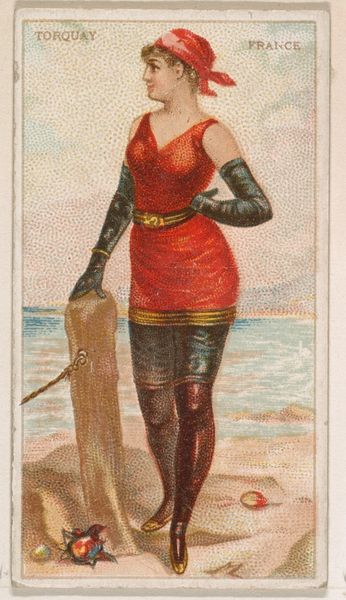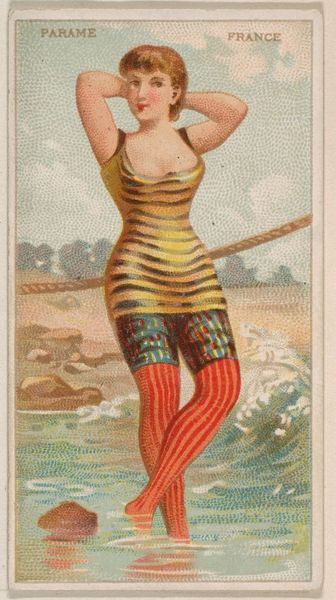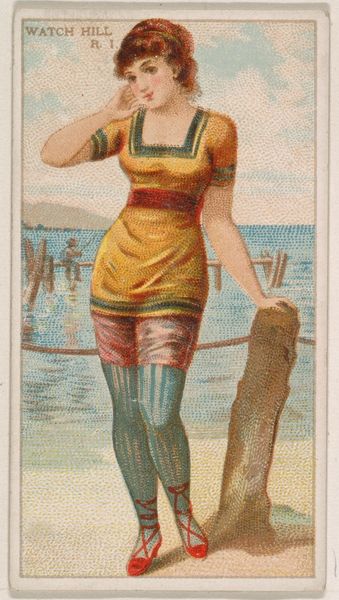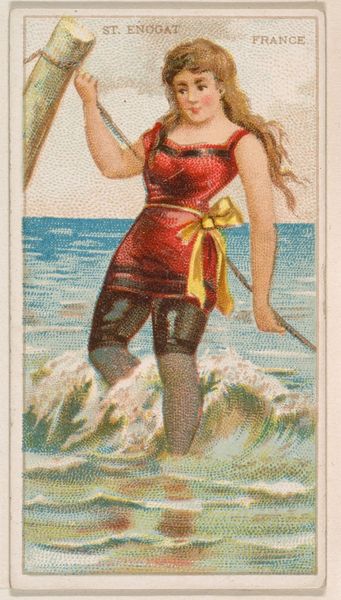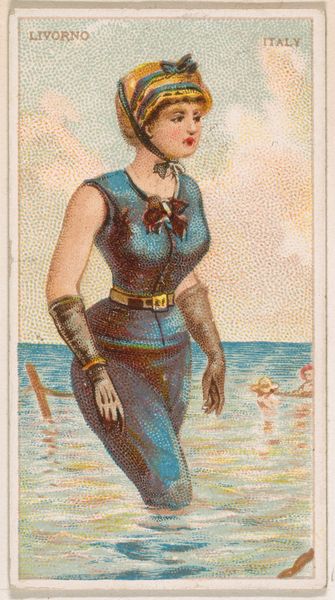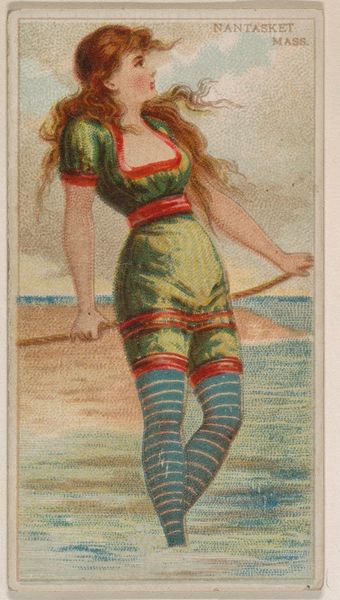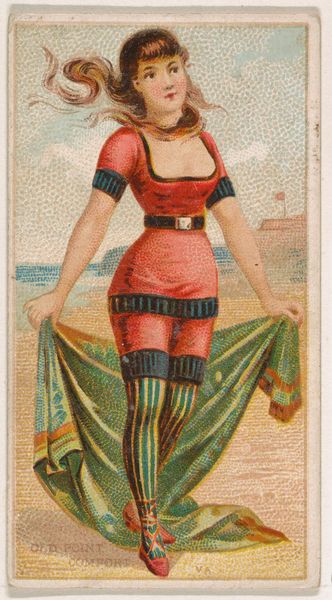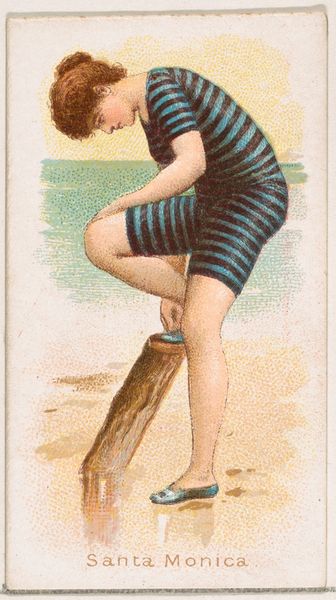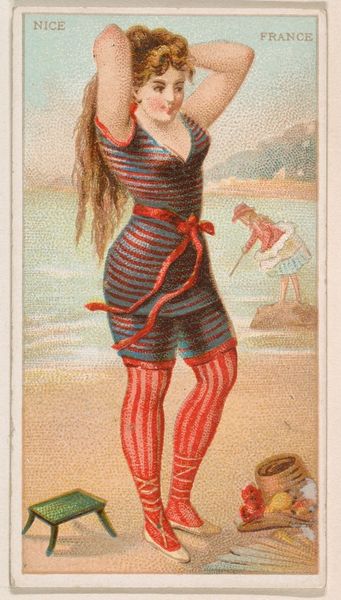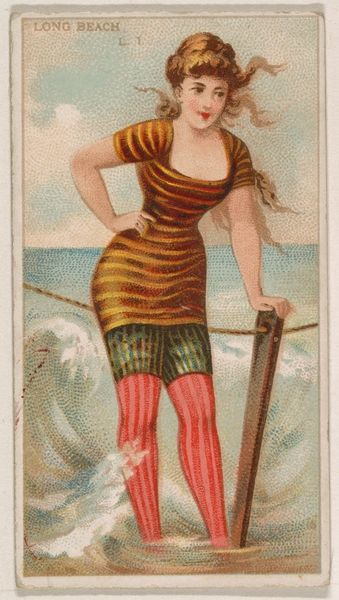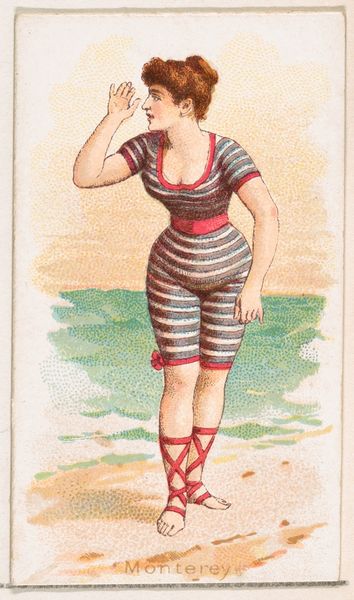
Dieppe, France, from the Surf Beauties series (N232), issued by Kinney Bros. 1889
0:00
0:00
Dimensions: Sheet: 2 3/4 × 1 1/2 in. (7 × 3.8 cm)
Copyright: Public Domain
Editor: This is “Dieppe, France, from the Surf Beauties series” printed by Kinney Bros. in 1889. It’s a small print, part of a series for a tobacco company, so it has a very different function than most of the artwork in this museum. It looks like a lithograph – how would you interpret this piece? Curator: For me, the fascinating element here lies in understanding this image not simply as a representation, but as a commodity produced within a specific industrial framework. How was it made? Kinney Brothers Tobacco Company mass-produced these images; we should consider the labor conditions, printing technologies, and distribution networks that made such an object possible. Editor: So, it's more about the mass production than the woman in the image herself? Curator: Precisely! Though she’s interesting, of course, as are her modes of display through pose, garment and gaze. But I think it's much more crucial to think about the transformation of images into inexpensive collectibles and their social circulation in an emerging consumer culture. What kind of machinery was needed for these colors and the high-detail in printing so many copies? Consider the source materials, too – were these photographs redrawn or re-engraved? The processes shape meaning as much as any symbolism we might detect. Editor: That's an interesting way of looking at it; I hadn’t considered that level of detail about production before. I’ll have to pay attention to those kinds of material details from now on. Curator: Exactly! By emphasizing these things, we get a much clearer idea of what underpinned the circulation and meaning of the artwork. It is, after all, the very materiality of such artworks that dictates so much of what became visible and understandable to viewers.
Comments
No comments
Be the first to comment and join the conversation on the ultimate creative platform.


